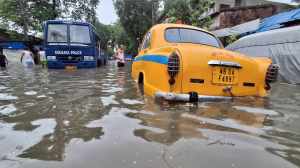IAF upgrades bases in east to counter China
Worried at increase in Chinese airfields along the border, Centre is upgrading its infrastructure at all Air Force stations.

Worried at the increase in Chinese airfields along the border, the Centre is upgrading its infrastructure and fleet strength at all Air Force stations under the Eastern Air Command.
Air force sources, requesting anonymity, said assets from the Western Sector were being moved towards the Eastern Sector in view of the ‘threat’ from China.
In keeping with the upgrade plans, AFS Dinjan, an Air Defence Data Control Centre (ADDC), will have a Commercial Off-the-Shelf (COTS) Air Data Handling System within the next month, replacing the Star Sapphire Radar now being used.
“Our basic objectives are to identify enemy aircraft, do a threat evaluation of the assets and destroy them with the help of interceptors and air defence artillery. With COTS data handling, we can do the identification and threat evaluation automatically,” Squadron Leader R Mukherjee, an officer with the 511 Signal Unit at Dinjan, said.
Briefing journalists, who are on a tour of the air force facilities, Mukherjee, a flight controller in the ADDC, explained that after identifying an enemy asset and evaluating its threat, the ADDC issues ‘scramble’ orders to fighter aircraft for its destruction.
“After receiving the orders, our men take about three minutes to get airborne and scramble after the enemy aircraft,” he said.
Stating that Dinjan would be the second ADDC in the country to get a COTS radar after Lucknow, he said this would go a long way in better monitoring aircraft movement along the 1,600-km border with China and Myanmar.
While the Western Sector witnesses one scramble operation after approximately every 10 days, its number has come down recently, air force sources said, adding that there was a possibility of the Eastern Sector witnessing such operations in future.
Photos


Sep 23: Latest News
- 01
- 02
- 03
- 04
- 05





























